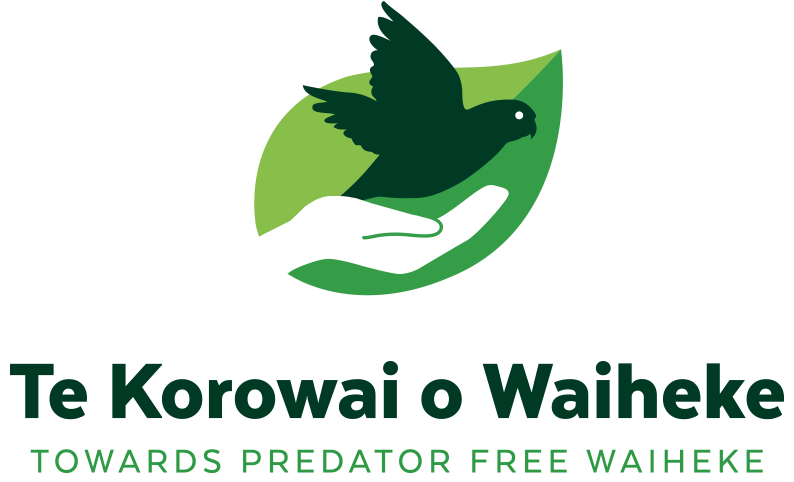One Of The Smallest Birds In Aotearoa — Written by Te Korowai o Waiheke Team Member
📸 Grey Warbler (riroriro) & Shining Cuckoo, captured by Jason Bryant
As November rolls around, spring is well and truly underway. For me, this month is full of quiet mornings in the bush, counting birds. Five-minute bird counts are an important part of our outcome monitoring, and they are a fantastic excuse for me to spend time making observations of our manu species at this time of year. While the more recognisable birds in our ngāhere are the raucous kākā and bolshy tūī, sometimes a much smaller visitor may come pay you a visit. The unmissable trill of their descending call stops me in my pace. Above me is a flowering manuka tree, and hopping between its branches are a flurry of grey feathers. They are a monotone of moody clouds, with flashes of white on their tails and a speck of red in their eyes. I could fit all three of them in the palm of my hand they are so small.
The riroriro, or grey warblers, are one of the smallest birds in Aotearoa. Often found foraging alongside the likes of tauhou and pīwakawaka for small insects in our flowering and regenerating bush. The pīpīwharauroa (shining cuckoo) is a migratory bird native to New Zealand and the South Pacific. When riroriro make their finely woven nests in the canopy, the shining cuckoo see this as an excellent opportunity for some free babysitting. These sneaky birds will lay their own eggs in the nest of the riroriro, which often leads to the poor parent raising a chick which grows to be twice its size!
Today, though, there are no cuckoos to be seen, some peace for our family of riroriro. A parent flutters to and from each little chick, they are both grown enough to be out of the nest, but still demand every second of their parent’s attention. The air is still enough to hear their insistent peeping between each mouthful of insect. I often consider riroriro to be the most secretive of our back yard and bush birds, always heard and never seen. Next time you’re out for a walk and you hear the distinctive trill of their call, take a moment to sit quietly and you may just capture a glimpse of them, too.
— Written by Charlie Thomas, Te Korowai o Waiheke Team Member
Captured by Tristan Cullen


